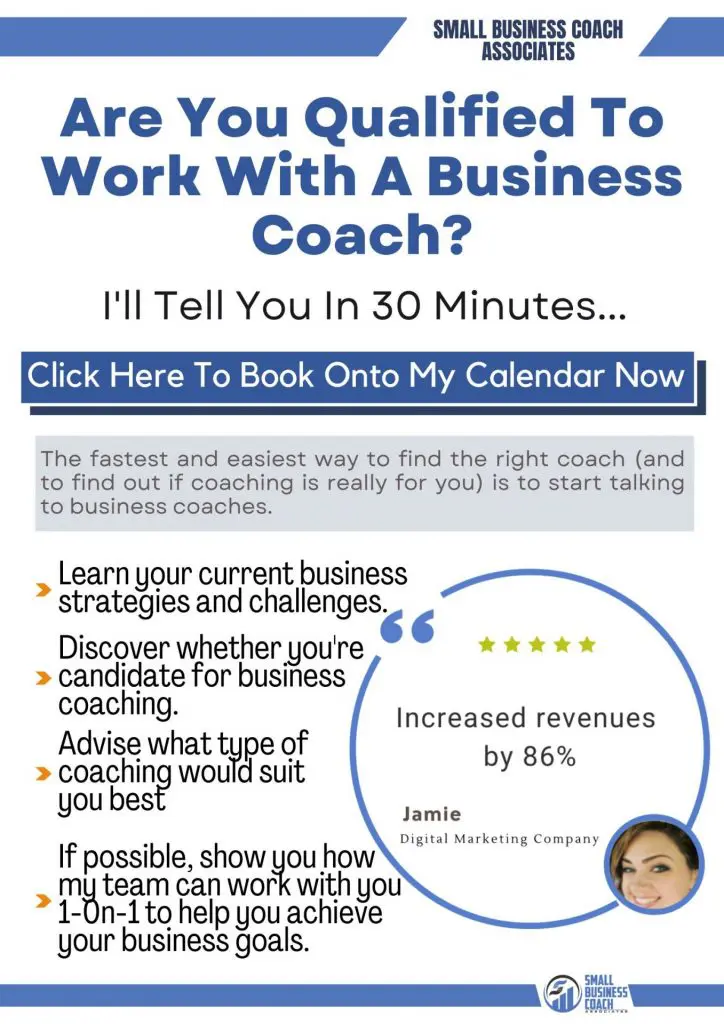Gaurav Sharma, Attrock 
The automation that my team and I use in our day-to-day work is sending automated personalized emails at scare. While personalization improves the ROI of email marketing, automation scales things up and helps me run bulk email campaigns.
I think if you can invest only in one type of marketing automation, go with automated personalized emails. These are cost-effective and can deliver great results, not to mention they save a lot of time and effort.
I use automated email campaigns both for my own business and for my clients. I have run several successful email outreach campaigns that delivered exceptional results and you can do the same.
So, invest in email marketing automation for your business and see the results first-hand.

Every business owner should use a social media management tool automation. As an entrepreneur, you don’t want to spend time scheduling content daily and switching between platforms just to remain active.
The best way to have a sharp presence across multiple networks, with the least amount of work, is by using a platform like SocialBee. You can create, schedule, share, and analyze content for all your account from one place.
More than that, by using a social media posting tool you can:
🎨 Use the Canva integration to design your posts right inside SocialBee.
📦 Structure your content in categories to obtain a solid & balanced mix.
📄 Connect the RSS Feed of any blog to import content automatically.
✍️ Customize the posts for each social media network individually.
🔄 Recycle evergreen posts or expire time-sensitive content easily.
📈 Track your links’ performance with over 5+ URL Shorteners integrations.
Here is a couple of my favorite automation that are particularly useful for every businesses. First, there is email automation. There are many email tools available in the market that allow you to automate your email sequences and send personalized emails to your contacts based on their interactions with your website and other engagement data. This can be a great way to stay in touch with your customers and prospects and nurture them through the sales funnel.
Another type of marketing automation that can be very helpful is lead capture automation. Lead capture forms allow you to automatically capture leads from your website and track their information in your CRM. This can be a great way to quickly build up your contact database and start nurturing leads down the sales funnel.
As a content marketer, one of our big initiatives is keeping our articles up-to-date and relevant for our readers. As big Airtable fans here at Referral Rock, and our team has created an auto-filled template that shows us all of our top articles that need optimizations. Anyone in our team can check this table on a regular basis and see what articles need to be checked for recency and relevance.
Live Chatbot is one of the best tools a business can use to serve its customers.
Simple questions, like ones regarding business operation hours, store locations, or just a simple initial greeting of the customer on a website – are the tasks chatbots can and even should handle. Answering these questions over and over again not only overwhelms customer service agents but also takes up valuable business resources. Allowing chatbots to handle these inquiries will free up time for human customer service agents to answer more complex questions. Chatbots can direct inquiries to the right department, saving agents and customers time.
Chatbots can also serve as trailblazers for new or small businesses that do not have many staff members or don’t know what type of inquiries their customers would normally have. In this case, chatbots can screen all inquiries and give the business owners ideas of what to expect when it comes to customer communications.

 Hope Dorman, Kajabi
Hope Dorman, Kajabi
My top automation that I use in my niche of content marketing is Semrush reports. I have an automated report from Semrush that comes to my email weekly that shares the top organic search positions for our domain. I appreciate their other reports that compile the key takeaway information with the top pages by organic search, a chat with the number of ranking keywords, top subdomains and the traffic breakdown, a competitive position map, and more. These automatically generated reports provide a helpful update on how our various search engine optimization metrics are performing.
Reporting takes a lot of time. Being able to automatically generate a report with charts and graphs without having to manually recreate them or update them in Google Sheets or Excel can save a lot of time while still providing the important information company stakeholders need.
People are spending way too much time sharing on social media channels (especially not the main ones) by doing it individually. Social media posting automation can be a huge time saver if you were planning to cover multiple platforms.
One example of how I’m using an automated process for this is by having a WordPress plugin that automatically shares my posts when I post them on the blog. Even more so, you can set up an automated email to go out when a new blog post is published.
Speaking of email, automatic customer segmentation is a must for every business that has an email list (and every business should have one). I suggest segmenting people on a few very specific categories, but not too many depending on what kind of articles and pages they visit on the site or what level of product awareness they are at.
Even more so, setting up an automated way to clean up your email list is a must if you want to get consistently high CTR in your email campaigns. For that, I recommend doing an automatic cleanup of people who haven’t opened your emails in the past 3 months (or however long you think is too long).
If you’re brand new to marketing automation, taking on a complex automated marketing campaign can seem daunting. To avoid overwhelm, I recommend starting small and selecting some simple activities that could benefit from automation. This might involve setting up a welcome email sequence for new subscribers, or a thank you message that gets triggered when someone opts into your email list. Once you feel comfortable with setting up simple automated sequences, you can gradually begin to implement automation in more complex marketing campaigns. It’s also important to track the results of your marketing automation campaigns so you can see which types of campaigns work well with your audience and which ones don’t. This is powerful knowledge that you can use to create more effective campaigns that truly resonate with your audience.
Email is a valuable tool for any business. It earns businesses an average of $35 for every dollar spent. Email is like a direct line to your customers, and it builds your brand. Therefore to maximize profits it is essential that a business automate the email marketing process.
The first email that you should automate is the initial welcome email that you send a prospect after they engage with your brand in any way. When a new customer signs up, send an automatic welcome email. It’s the first chance to show them that you care. Explain how you can help them and what they should do next.
The next most important email that you should automate is the abandoned cart email. Last year, close to 70% of online shopping carts were abandoned. That’s a lot of money left on the table. To avoid this, your brand should send automatic emails to shoppers who abandon their carts. These messages can remind them that they left something behind, and encourage them to come back and complete the purchase.
The final most important email that you should automate is a Birthday or anniversary email.
You can trigger emails based on the date of the subscriber’s birthday or when the subscriber first signed up. Send a special offer to thank them for their loyalty. These emails typically have a high click-through rate because when you reference someone’s birthday or anniversary date it will catch their eye and intrigue them to see what the email is all about.
Whichever automated email you decide to use, can easily be set up from virtually any email marketing software provider such as Mailchimp, Active Campaign, or virtually any solution that you can find these days.
Apart from the typical email marketing campaigns and email follow-ups, business owners that sell B2B should look into automating their lead qualification process.
If you are not familiar, lead qualification is the process of evaluating potential customers based on their probability of converting. The goal is to minimize time with leads that are not a good fit for your business or whose buying temperature is too low and focus your efforts on hot leads.
You don’t need a fancy enterprise tool to do this. You can use a marketing automation platform like Encharge to qualify and segment your leads based on their form responses, actions on the website, and other data like country, location, etc. This process can be automated by building a flow that automatically scores good fit customers. For instance, if a lead indicates that their budget is over $10,000, you can increase their lead score by 10. Once they reach a lead score threshold, good fit customers can be automatically added as contacts or deals in your CRM. That way, you can follow up and allocate your sales efforts to the right people.
 Miruna Dragomir, Planable
Miruna Dragomir, Planable
Digital marketers are spoilt for choice when it comes to automation tools. My team and I use at least 15 tools on a daily basis. My top pick has to be content marketing automation which involves content creation and social media. Social media creation, planning, collaboration and scheduling has to happen in the same place for us. Since that software is also our business, we use it at all times. It’s important for us to nurture collaboration and have the peace of mind that every social media post looks pixel-perfect when it goes live. And we want to do that as efficiently as possible. We’ve sworn off spreadsheets, email threads, and Google Drive images for social media management. We’d rather keep those for what they were intended: analytics and reporting.
Besides social media, we automate project management as much as possible. We use Notion for company wiki, OKRs, and project planning — Sunsama for task management, and we integrate the two. That’s one of our core principles when it comes to automation: integrate and connect the software that we use. No copy-pasting. Ever.
Email marketing is known as the digital marketing channel with the highest ROI. Pretty much anyone in business check their emails on a daily basis so why don’t you leverage this by sending automated regular emails to your prospects and leads? As soon as you have email subscribers, you need to prepare a sequence of emails that will be sent automatically. Don’t be too salesy though. Provide value first by giving them tips, industry trends, insightful content, etc. Once you’ve provided enough free content, it’s find to send a commercial/transactional email.
Onboarding Processes for New Customers:
Most businesses perform routine tasks in onboarding each new customer, so since these tasks are repetitive, it makes them easy to automate!
By automating your small business onboarding process, you will be able to:
- Enhance the buying experience for your customers.
- Second, make it possible for new customers to sign up for your product or service.
- Lastly, you can spend more time engaging, educating, and delighting new buyers.
Tips for Automating Your New Customer Onboarding Experience:
- Create a pre-built campaign template.
- Handle the transactional stuff automatically.
- Use tags to segment your customers.
- Use different email accounts to send emails.
Customer onboarding automation is crucial to building a successful business<span style=”font-weight: 400;”>.

 Chris Makara, Bulkly
Chris Makara, Bulkly
For me, all business owners should be using social media automation in their business. While there are quite a few benefits of using this type of automation in their workflows, perhaps the biggest is the time that you save once it is implemented. Without social media automation, business owners waste quite a bit of time sourcing, creating and scheduling status updates across various social media platforms. This can easily add up to several hours each and every week.
However, there are many business owners who are now automating this entire process with automation tools like Bulkly. By leveraging a tool like this, it allows them win back their time so that they can focus on more important things – like running their business.
When it comes to email marketing, I believe that the entire process has to be automated. And at the same time, it’s impossible to venture into email marketing without considering personalization. Personalization includes collecting data on prospects, creating their profiles, and then segmenting lists to send more relevant messages to different subscriber groups. Thus, even when using an email template, the emails won’t look as robotic, when some personalization principles have been incorporated.
When it comes to personalizing my messages, I use Personalization Tags extensively – name, subject line, website name, link, etc., depending on the outreach campaign I work on. We use the Snov.io tool to automate this process.
And of course, adding an email signature to all of my emails is a must-have. Email signatures give this personal touch to the emails and influence the first impression a prospect gets about our company. With Newoldstamp I can automate this part as well – my email signature always looks professional and what’s more, I can track the impressions and clicks in the built-in analytics.
 Santiago Safdie, InvGate
Santiago Safdie, InvGate
Hubspot is our main source of automation, and the reason behind that is that it allows us to automate not only marketing but also sales.
We use it to automate blog post publications, email nurturing campaigns, workflows, customer service surveys, and even social media and ads.
It’s a great one-stop-shop that allows the whole team to have a clear view of the work pipeline, statistics, and performance of each area. Plus, it makes analysis and reporting simpler for me.
Clearbit data capture to slack – gives you a crystal clear look into what businesses are hitting your website.
 Mykola Haichenko, Visme
Mykola Haichenko, Visme
For outreach specialists like me, email automation is the cornerstone of everyday work.
If I had to send each email manually, I’d miss all the deadlines imaginable. But tools like Respona let me automate the entire sending process and do it without compromising on the quality.
They leave no trace of automated mass outreach.
With a few clicks, I can personalize each email in my bulk campaigns by adding the recipient’s name, organization, post title, pretty much anything. In the end, an email feels like it was sent to one person, not hundreds.
But while it’s possible to automate the technical part, there’s still one thing that remains unautomatable – the message you’re going to convey.
Let’s take follow-ups as an example.
You can’t insert a generic portion of text like “just bumping this to the top of your inbox,” hit “Send,” and expect lots of replies. You’ll need to be more creative than that.
Try to find your prospects’ common pain point and put emphasis on it a follow-up.
What works for me is mentioning that their competitors have already done what I ask them for. By ignoring or rejecting my pitch, they’ll basically lose to their competitors on my playing field. Such a delicate hint helps me increase my response rates by around 30%.
The bottom line is email automation works with a thought-out message only, not on its own.
Chatbots are the primary point of contact on all of our websites; when we are not available to chat (rare, as we are available 24/7), or if we are moving the conversation forward, we ask for visitor emails and add them to our email marketing funnels, which educates users about marketing tips, trends, and services we offer, creating value for the visitors and growing our email lists to market our SaaS products and warm up leads.
We use Zapier to connect Drift, Google Sheet, Clearout, and Lemlist – whenever an email is collected or a new lead is created on Drift, the automation triggers and sends emails to a Google Sheet, where Clearout validates the emails and sends safe to send emails to an email marketing funnel.
Setting up marketing automation helps your business optimize its brand presence across every channel your customers engage in, allowing your sales team to focus its efforts where there’s the most likelihood of conversion.
In general, B2B marketing automation will follow the same general structure:
Step 1: Build a list of potential customers to target.
Step 2: Execute an automated campaign.
Step 3: Measure how your potential customers react to the campaign.
Step 4: Group your customers by their reactions.
Step 5: Send qualified leads directly to sales and route warm leads to a nurturing cycle.
Step 6: Monitor performance and redirect warm leads to sales as soon as they become qualified leads.
B2B marketing automation is usually done through software, but outsourcing some or all of your sales cycle is also a great strategy to eliminate repetitive tasks so your sales team can focus on closing deals.
9 B2B marketing automation strategies to implement today
If you’re wondering where to start when it comes to B2B marketing automation, these nine strategies make great first steps.
-
Page-based triggers
Identify key behaviors leads engage in before making a automation purchase. Maybe that’s visiting your pricing page, signing up for gated content, or interacting with your live chat feature. Whenever a prospect engages in that behavior, automate a follow-up so you can start nurturing that lead right away.
-
Educational content for new clients
If every onboarding process is generally the same, automation sending educational content to clients after they sign up for your service. Craft this content based on FAQ your customer service team usually fields. Depending on the preferences of your clients, send this information immediately after sign-up, or use an email drip campaign to avoid overwhelming them.
-
Lead nurturing
B2B marketing automation is perfect for lead nurturing. Share educational information with your leads through a newsletter or other email sequences to showcase your place as a thought leader in the industry.
-
Lead segmentation
As you gather data about potential leads, automation segment them into different email lists based on the type of activity, their level of engagement, location, and other factors. This time-saving step will allow you to level up your lead nurturing program so each segment is personalized.
-
Lead qualification
Many marketing automation softwares will qualify leads based on the parameters you set. Each behavior is assigned a point value, and when points reach a certain threshold indicating they are close to making a purchase, you can automatically transfer the lead to a different email list or send their name and contact information to a sales representative for follow-up.
-
Data collection and maintenance
Studies show marketers spend 16 hours a week on repetitive tasks like exporting, importing, and sorting data from a CRM program into an email service provider. automationthat process so your marketers and salespeople can focus on conversions instead. The easiest way to do this is to ensure all your software partners are compatible.
-
Form submissions
If you’re new to marketing automation, this is one of the easiest places to start. For any forms you have on your website, automate what happens after the lead completes it. Send it to the right point of contact within the company, and send an email to the lead letting them know when to expect a response. You can even set up your automation to initiate outbound call backs.
-
Live chat
Seventy-six percent of millennials suffer from phone anxiety, so chatbots have become an increasingly popular way to interact with these clients. In fact, 42% of customers opt to use a chatbot when they need customer service. The chatbot can be automated to direct certain queries to a live chat feature to ensure better customer service.
-
Social media
Marketing automation services can post content, like content from specific feeds, and even thank followers for following. When done right, your followers won’t even notice some of your feed is automated. You can also outsource your Facebook messages so your salespeople don’t have to deal with cold leads.






































 Helga Moreno,
Helga Moreno,  Katrina Dalao,
Katrina Dalao,  Natalya Bucuy,
Natalya Bucuy,  Hope Dorman,
Hope Dorman,  Paul Posea,
Paul Posea,  Tara Malone,
Tara Malone,  Arlen Robinson,
Arlen Robinson,  Kalo Yankulov,
Kalo Yankulov,  Miruna Dragomir,
Miruna Dragomir,  Jonathan Aufray,
Jonathan Aufray,  Rakesh Kumar Sharma,
Rakesh Kumar Sharma,  Chris Makara,
Chris Makara,  Oksana Chyketa,
Oksana Chyketa,  Santiago Safdie,
Santiago Safdie,  Mark Ankucic,
Mark Ankucic,  Mykola Haichenko,
Mykola Haichenko,  Tenny Jesse,
Tenny Jesse,  Samir Sampat,
Samir Sampat, 











